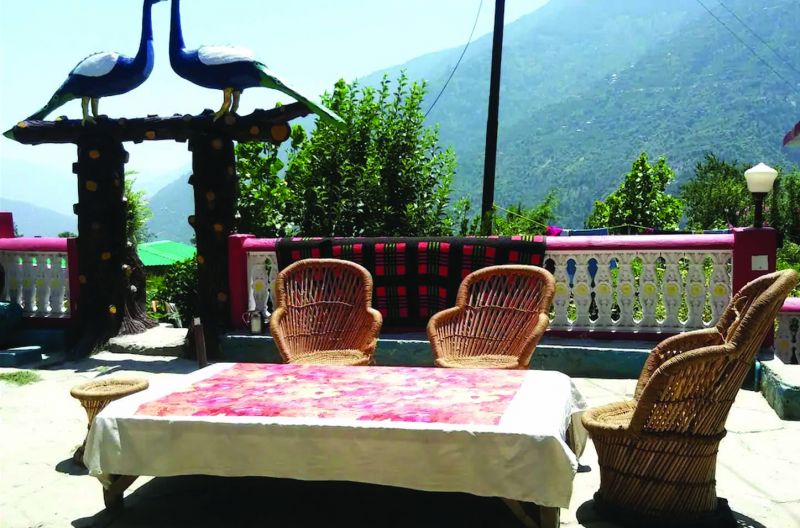Home sweet home
Out with conventional hotels, in with hostels, homestays and rented apartments.
Just like most people in their early 20s, Delhi resident Rohan Jolly wanted to host his birthday party with pomp and gusto. Except, he wasn’t willing to settle for anything less than the perfect venue—a place secluded, safe, homey and inexpensive—but only if it was located at a distance from the city. What would have otherwise been a mammoth task for a picky lad became a breeze once he found a six-bedroom farmhouse, listed on a home-sharing app that allows people to offer guests their lodging (that too 40 kilometres from the capital).
“I wanted it to be big enough for 12 to 15 people but there ended up being so much more to it. The place was spacious, almost like a mansion, and the owner was helpful with directions and anything else we needed from him. He even surprised us with a bonfire. A guard was present to keep us safe. Early in the morning, we enjoyed the sunrise from the lawn. Oh, and it cost us only Rs. 12,000 for the night.”

Like in Rohan's case, many millennials these days are opting for unconventional accommodation options during their travels, namely rented apartments, homestays, hostels and, in some cases, other people’s couches. Gone are the days when regular hotels—with their matchbox rooms done up in plain furnishings, cookie-cutter hospitality and lack of creativity and homeliness—were the young traveller’s pick.
Soity Banerjee, who heads a nationwide responsible tourism initiative and has stayed in and worked with plenty of homestays across the country, understands this only too well. “The homestay movement has grown substantially over the years. More youngsters see it as a cheap option, but more than that, they want to go to unique, immersive and unusual places. Maybe it’s curiousity as well,” she says.

A homestay is different from a house listed on an app or a website. It is usually located in a remote area and it guarantees a rich cultural experience. This is primarily because the home-owning family often belongs to the local community and happens to stay in the same premise (albeit in different quarters, to give the guest their privacy). Soity continues, “Even as you are on holiday, you see the universe through the eyes of someone else. You share their food, culture, and you can even join them in their routine. Youngsters also feel quite safe in homestays, given that most hosts go out of their way to make them feel like family.”

With the growing popularity of the accommodation option, many rural areas and certain sections of society, especially women, have been greatly benefitted. Take, for instance, the village of Sarmoli near Munsiyari in Uttarakhand. A collective of homestays, Maati Sangathan (Collective), is operated independently by a group of women. They have been doing this for many years and the efficiency with which they run the homes is incredible. “The homes are quaint with lovely windows, comfortable bed and all the menities you will need. Once, one of our hosts woke up early in the morning to cook us breakfast on the day we had to depart even though we had requested her not to,” concludes Soity. Not bad for a kind of accommodation that will not have you shell out more than a thousand rupees a night.
For the homestay-owners as well, it has been an equally enriching experience.
Rekha Rautela, one of the members of the Maati Sangathan and a homestay owner, says, “We would contribute seven per cent of our earnings to the village's Vann Sangathan (Forest Collective). Now our income has increased so much that it is down to two per cent, and it still a very significant amount. Since guests have started staying, the houses have also improved, and they teach us plenty of things just as they learn from us. And, finally, the women also feel independent and empowered.”

And then, at last, there’s a growing bunch of millenials who prefer to stay in a backpacker’s hostel. These places usually provide the guest with a single bed or pod in a comfortably dormitory-like room and do not cost more than a few hundred bucks a night. For Puneet K. Paliwal, a 29-year-old Delhi-based photographer and an avid traveller, it is a wonderful exercise in independence. He says, “I like it alone and, in many hostels, I am allowed to cook my own food. That is exactly the way I live at home. The owners are always incredibly helpful with recommendations and certain hostels create a friendly space for solo travellers; other guests soon become your friends. Some hostels even let you do gardening, paint wall murals and engage in a creative experience.”
So, it isn’t difficult to imagine why hotels—at least for the youth—seem to be going out of fashion. After all, travel is no longer solely about opulence and relaxation. It is often an introspective and highly fulfilling experience, and what better than a place that not only lets you do all that, but also adds great value to the overall experience.


















